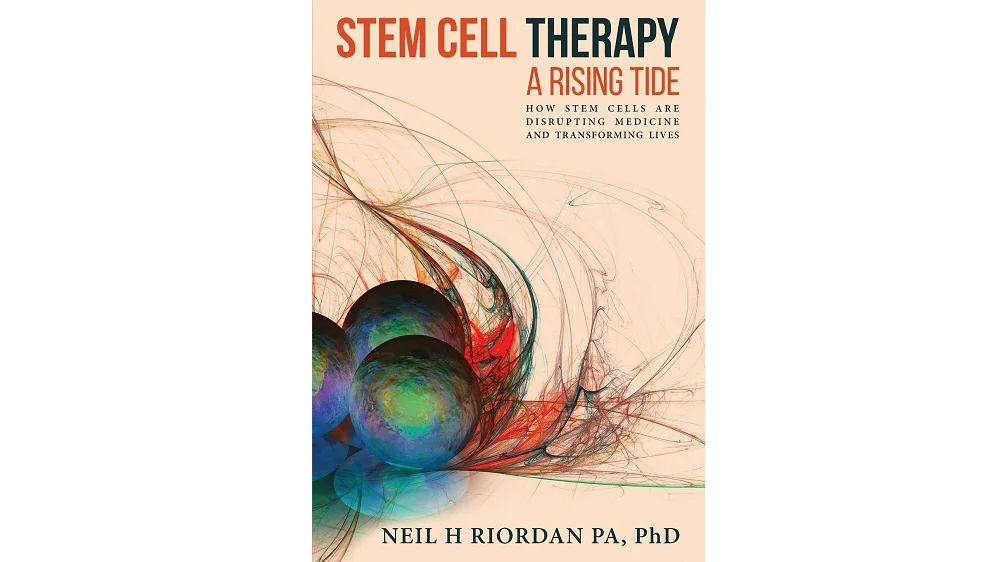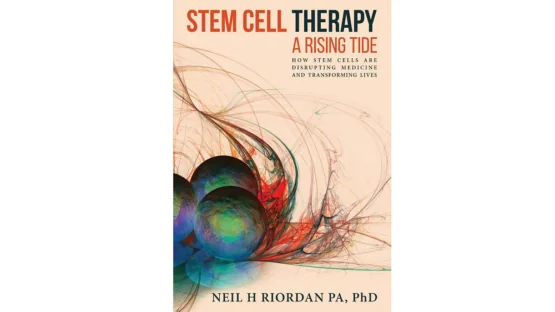“Stem Cell Therapy: A Rising Tide” by Neil Riordan is a comprehensive exploration of stem cell therapy along with its potential benefits, limitations, and prospects. The father of mesenchymal stem cell research, Arnold Caplan, dubbed Riordan as a pioneering figure in stem cell research and application. Therefore, it is no surprise that Riordan brings an expert perspective to this fascinating and complex subject, delivering a compelling narrative that is both highly informative and accessible to a lay audience.
Structured for learning
Riordan’s book is structured in a manner that allows readers to gain a comprehensive understanding of the topic. It commences with a historical perspective on stem cell research, detailing its origins and evolution. He then delves into the science behind stem cells, explaining complex biological processes with simplicity and clarity. The discussions involving different types of stem cells, including embryonic, adult, and induced pluripotent stem cells, illuminate their unique characteristics, the means of their procurement, and their respective implications.
The book’s primary strength resides in its meticulous exploration of the therapeutic potential inherent in stem cell treatments. Riordan, with his adept comprehension and expertise in the field, deftly intertwines real-world case studies with rigorous scientific evidence. This approach allows him to demystify the complex landscape of clinical applications of stem cell therapy, making it accessible and understandable to a broad audience.
The book is not merely a dry presentation of scientific facts. Instead, it invites readers into a world of discovery in which science and patient experiences intersect. Each case study serves as a testament to the transformative potential of stem cell therapy, illuminating the profound impact it can have on individual lives.
Potential for treatment
Riordan’s vivid depiction of how stem cells can be utilized in treating an array of conditions, including but not limited to spinal cord injuries, Parkinson’s disease, and autoimmune disorders, illuminates a promising horizon in the world of medicine. His discussion doesn’t merely delineate the technical aspects but also underscores the human dimension, showing how these therapies can profoundly affect patients’ quality of life.
The narrative underscores the notion that these are not abstract, distant diseases but real-life struggles that people wrestle with every day. By presenting the potential of stem cell therapy, Riordan instills hope in those grappling with these illnesses, depicting a future in which they might have access to life-altering treatment options.
In the end, the reader is left with a deep appreciation for the groundbreaking potential of stem cell therapy, recognizing it as a rising tide in the field of medicine. In his book, Riordan creates an enduring narrative that bridges the gap between intricate scientific detail and the real-world implications of this emerging therapy, delivering an engaging and hopeful vision of the future of healthcare.
A look at ethics
While Riordan presents a positive picture of stem cell therapy, he does not shy away from addressing the controversies and ethical issues surrounding this field. He acknowledges the political and moral debates surrounding the use of embryonic stem cells, expressing a measured perspective. Riordan also addresses potential pitfalls in stem cell therapy, such as the risks of rejection and tumorigenesis and the practical limitations regarding scalability and cost.
In the latter part of the book, Riordan navigates the intricate regulatory landscape of stem cell therapy, vividly detailing the scientific complexities and varied global regulations that pose challenges to clinical trial implementation. However, he underscores the importance of these trials in bringing therapies to patients.
Riordan emphasizes the rigorous oversight necessary in this nuanced field, touching on the ethical debates surrounding the use of certain stem cell types. These discussions illuminate the challenges faced by researchers while emphasizing the need for ethical conduct.
He underscores the significant costs of developing stem cell therapies, which can deter investment in long-term clinical trials, hindering progress. Despite this, Riordan remains optimistic about the future and the need for continued investment in research and development.
Riordan also addresses the difficulties in patient recruitment for trials and safety considerations. He highlights the complexity of dealing with advanced disease stages in trial participants and the necessity of safety monitoring.
Reinforcing studies
Lastly, Riordan delves into the challenges of standardization and reproducibility in stem cell therapies. He emphasizes the importance of maintaining stem cell quality and consistency, underlining the need for robust research methodologies.
In the end, Riordan offers insightful predictions about the future of stem cell therapy, always pointing back to the essential need for more research and development. His discussions emphasize the magnitude and depth of ongoing challenges, but they also shine a light on the exciting promise that this field holds. This balanced and honest exploration of the hurdles and potential of stem cell therapy leaves readers with an informed understanding of the current state of the field and its hopeful future.
Despite its many strengths, “Stem Cell Therapy: A Rising Tide” does have a few limitations. The case studies, while informative, may seem anecdotal to some readers, and the lack of negative outcomes may present a slightly biased view of the therapy’s success rate. Additionally, while Riordan strives for accessibility, certain sections of the book may still prove challenging for readers with minimal scientific backgrounds.
Nonetheless, “Stem Cell Therapy: A Rising Tide” is an enlightening and engaging read. It serves as a comprehensive guide to the exciting possibilities of stem cell therapy and is a testament to Riordan’s deep knowledge and passion for the subject. As a thought-provoking exploration of a cutting-edge field, this book is a valuable resource for both professionals in the field and people seeking to understand the potential of this promising area of medicine.




